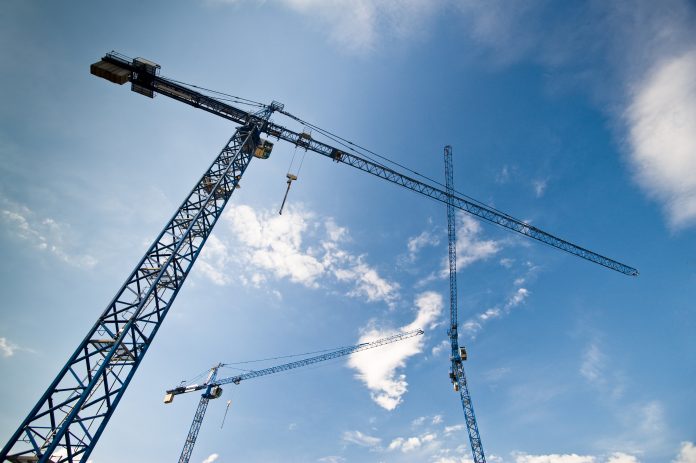The events of 2020 have required many to reconsider their business models at an astronomical rate. Jamie Parr, director & founder of BD Solutions, explains how this has changed the way the construction industry is working and the effect this is having on the growing MMC sector
The pandemic has if anything accelerated businesses into exploring ways of doing things better, this has led to a marked increase in clients wanting to explore Modern Methods of Construction (MMC) and other efficiency-based solutions such as digital tools, to enable them to meet their business goals, with some companies sighting as much as a 150% increase in the level of enquires about MMC in all of its various guises.
Due to our position in the market acting as a bridge between the construction supply chain and end-user client groups, luckily, we have a broad range of clients ranging from leading tier 1 contractors, MMC supply chain, Housing Associations, Local Authorities and private developers allowing us to spread our risk.
However, the events of 2020 have caused a marked shift in focus whilst we are continuing to support with our contractor and supply chain clients, supporting the implementation of MMC into Public Sector projects is where it is at, across multiple tenure types, but particularly housing, education and healthcare.
Moving from siloed to collaborative/blended roles
Historically, the construction industry has dogmatically pursued a ‘pigeon-holed’ meritocracy based upon siloed roles. This is a key problem with regard to the efficiency of our industry.
The industry is predicated upon using separate individuals to deal with the pieces of the ‘puzzle’; quantity surveyor, site manager, site engineer, mechanical designer, electrical designer, structural engineer, drainage engineer, landscape designer etc.
Technology is moving to a more manufacturing and digitised context where these disciplines are blended into one homogenous model. The accepted premise (and yes there’s some irony in observing the current institutions; RIBA, CIOB, RICS et al promoting this) is for the AEC industry to move towards far more efficient industry role models, such as automation and aviation, but we’re all going to have recognise that the current siloed roles will have to significantly change.
Current BIM capabilities are so harmonised that they’re waiting for the people to catch up. An abrupt paradigm shift is definitely on the cards.
Digitisation of construction supply chain
I’m predicting a marked increase in the digitisation of the MMC supply chain, to realise DfMA efficiencies, free up design resource, reducing costs and allowing greater overall control of all the parameters that can be accommodated within these digital models.
The frontend Generative Design (GD) market has boomed in the last couple of years, which is encouraging with the likes of Archistar bringing notable innovation harnessing the power of data.
However, it is my view that there is a need for a digitised library of real time generative / adaptable MMC products to inform the GD assumptions thus bringing decisions around MMC further forward in the development process, contributing to better surety in pipeline and decisions being made earlier a key current blocker of progress. Expect to see this take off in 2021. There are multiple companies emerging int this space, but for me Matterlab and RIVEIA are ones to watch.
Improvements in public sector procurement
Generally speaking, approaching large clients such as Housing Associations, Local Authorities (or any client that has a variety of projects) as a programme of works, rather than individual projects, fundamentally changes the scale and proposition for MMC. So it is great to track all of the work the UK government are doing to improve public sector procurement across the departments.
It’s apparent from our International reach that, perhaps with the exception of Singapore, the UK leads the MMC way with regard to government MMC initiatives.
A great deal of work has been done in recent years to manage the incongruous variables associated with large Government Procurement Frameworks in order to transition these frameworks from Open towards, far more manageable, Closed Systems.
Examples of useful tools to utilise are:
- MCHLG MMC Categories Framework
- The Construction Playbook
- The Value Toolkit (Construction Innovation Hub).
The benefits of these standardised controls shouldn’t be underestimated. The step-change now requires the UK players to respond to these with tangible and clearly demonstrable methodologies.
Competitive advantage will certainly be available for those who can move past the rhetoric and prove that they have the systems in place to manage the variables of these frameworks, whilst accommodating all of the government’s hard and soft key drivers, particularly Net Zero Carbon objectives.
Usefully, there are some really good and game changing technologies emerging, that are able to collate and interpret all the ‘noise’ associated with government frameworks which harness data and AI among other things. Having the capability to let all stakeholders use whatever systems they want, in whatever format, is crucial to seamlessly integrating controls, rather than signing up to prescribed protocols.
Covid -19 controls the ‘new normal’?
We’d be delighted to say that everything will return to 2019 soon and perhaps we should. Unfortunately, all the evidence suggests to the contrary. It’s a steep learning curve, but it’s clear that there’s considerable competitive advantage in cleverly demonstrating Covid control measures, such as the remarkable SiMon system.
Certainly, recent government frameworks now require and assess you on these control measures.
Forever the optimists, this pandemic has by necessity, more than choice, acted as a catalyst for these top fundamental efficiency improvements:
- Good people can work remotely and autonomously, even more effectively.
- There are clearly tangible efficiencies associated with not travelling to meetings.
- The collaborative technologies that were ‘nice to have’ are now absolutely necessary.
- MMC options are better suited to social distancing than traditional construction.
- Uptake of technology, particularly digitisation of the AEC Industry, is becoming ‘more normal’ in the remote working paradigm.
- Tangible efficiencies need to be demonstrated in a more competitive marketplace.
Jamie Parr
Director
LinkedIn: Jamie Parr
LinkedIn: BD Solutions Offsite
Twitter: @jparr_mmc














